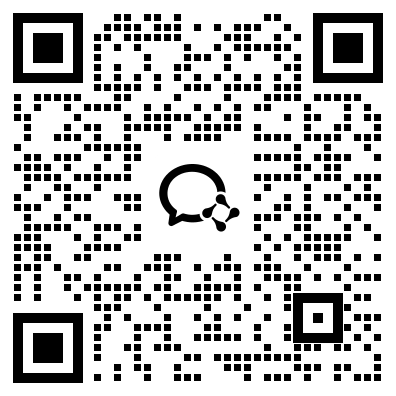自考“英语语言学”资料(7)
1.61.What is hypotactic relation?What is paratactic relation?
“Hypotactic relation”refers to a construction where constituents are linked by means of conjunction,e.g.“He bought eggs and milk.”“Paratactic relation”refers to constructions which are connected by juxtaposition,punctuation or intonation,e.g.,“He bought tea,coffee,eggs and milk”(pay attention to the first three nouns connected without“and”)。
1.62.What is semantics?
“Semantics”refers to the study of the communication of meaning through language.Or simply,it is the study of meaning.
1.63.What is meaning?
Though it is difficult to define,“meaning”has the following meaning: (1)an intrinsic property;(2)the connotation of a word;(3)the words put after a dictionary entry;(4)the position an object occupies in a system;(5)what the symbol user actually refers to;(6)what the symbol user should refer to;(7)what the symbol user believes he is referring to;(8)what the symbol interpreter refers to;(9)what the symbol interpreter believes it refers to;(10)what the symbol interpreter believes the user refers to… linguists argued about“meaning of meaning”fiercely in the result of“realism”,“conceptualism/mentalism”,“mechanism”,“contextualism”,“behaviorism”,“functionalism”,etc.(see Hu Zhuanglin et al.,pp140-142).Mention ought to be made of the“Semantic Triangle Theory”of Ogden & Richards.We use a word and the listener knows what it refers to because,according to the theory,they have acquired the same concept/reference of the word used and of the object/referent.
1.64.What is the difference¬;¬;¬;¬;¬;¬;¬;between meaning,concept,connotation,sense,implication,denotation,notation,reference,implicature and signification?
(1)“Meaning”refers to the association of language symbols with the real word.(2)“Concept”or“notion”is the impression of objects in people's mind.(3)“connotation”is the implied meaning,similar to“implication”and“implicature”.(4)“Sense”is the lexical position in which a word finds itself.(5)“Denotation”,like“sense”,is not directly related with objects,but makes the abstract assumption of the real world.(6)“Reference”is the word-object relationship.(7)“Implicature”,in its narrow sense,refers to conversational implicature achieved by intentionally violating one of the four CP maxims (see I.122-123).(8)“Signification”,in contrast with“value”,mean the meaning of situation may not have any communicative value,like“What's this?”
1.65.What is the Semantic/Semiotic Triangle?
Ogden and Richards presented the classic“Semantic Triangle”as manifested in the following diagram,in which the“symbol”or“form”refers to the linguistic elements (word,sentence,etc.),the“referent”refers to the object in the world of experience,and“thought”or“reference”refers to concept or notion.Thus,the symbol a word signifies“things”by virtue of the“concept”,associated with the form of the word in the mind of the speaker of the language.The“concept”thus considered is meaning of the word.
1.66.What is contextualism?
“Contextualism”is based on the presumption that one can derive meaning from,or reduce it to,observable context:the“situational context”and the“linguistic context”.Every utterance occurs in a particular spatio-temporal situation,as the following factors are related to the situational context:(1)the speaker and the hearer;(2)the actions they are performing at the time;(3)various external objects and events;(4)deictic features.
The“linguistic context”is another aspect of contextualism.It considers the probability of one word's co-occurrence or collocation with another,which forms part of the meaning,and an important factor in communication.
1.67.How many kinds of meaning did linguists find and study?
(1)C.C.Fries(1952)makes a traditional distinction between lexical meaning and structural meaning.The former is expressed by those“meaningful”parts of speech,such as nouns,verbs,adjectives,and adverbs,and is given in the dictionary associated with grammar.The latter expresses the distinction between the subject and the object of a sentence,oppositions of definiteness,tense the number,and the difference between statements,questions and requests.In a word,“the total linguistic meaning of any utterance consists of the lexical meaning of the separate words plus such structural meaning…”
(2)G.Leech(1981) categorizes seven kinds of meaning,five of which are brought under the“associative meaning”(see the following chart)。
(3)Different from the traditional and the functional approach,F.R.Palmer(1981)and J.Lyons(1977)suggest we draw a distinction between sentence meaning and utterance meaning,the former being directly predictable from the grammatical and lexical features of the sentence,while the latter includes all the various types of meaning not necessarily associated thereto.
1.68.What is synonymy?
“Synonymy”is used to mean sameness or close similarity of meaning.Dictionary makers (lexicographers)rely on the existence of synonymy for their definitions.Some semanticians maintain,however,that there are no real synonyms,because two or more words named synonyms are expected without exception to differ from one another in one of the following aspects:
(1)In shades of meaning (e.g.,finish,complete,close,conclude,terminate,finalize,end,etc.);
(2)In stylistic meaning(see 1.67);
(3)In emotive meaning(or affective meaning,see 1.67);
(4)In range of use (or collocative meaning,see 1.67);
(5)In British and American English usages [e.g.,autumn (BrE),fall (AmE)].
Simeon Potter said,“ Language is like dress.We vary our dress to suit the occasion.We do not appear at a friend's silver-wedding anniversary in gardening clothes,nor do we go punting on the river in a dinner-jacket.”This means the learning lf synonyms is important to anyone that wishes to use his language freely and well.
1.69.What is Antonymy?How many kinds of antonyms are there?
The term“antonymy”is used for oppositions of meaning;words that stand opposite in meaning are called“antonyms”,or opposites,which fall in there categories1)gradable antonyms(e.g,good-bad);(2)complementary antonyms(e.g.,single-mar-ried);(3)relational antonyms(e.g.,buy-sell)。
1.70.What is hyponymy?What is a hyponym?What is superordinate?
“Hyponymy”involves us in the notion of meaning inclusion.It is a matter of class membership.That is to say,when X id a kind of Y,the lower term X is the“hyponym”,and the upper term Y is the“superordinate”.Two or more hyponyms sharing the same one superordinate are called“co-hyponyms”.For example,“flower”is the superordinate of“tulip”,“violet”and“rose”,which are the co-hyponyms of“flower”。













